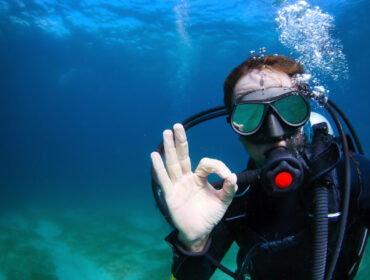Charles’ Law
If you have read my first article in this series, An Introduction to Scuba Gas Laws – Part I: Boyle’s Law, you will already be familiar with Boyle’s Law, which studies the relationship between the pressure and volume of gas while the temperature remains constant. Charles’ law also studies the volume of gas, considering the effects of temperature on the volume and pressure of the gas.
Jacques Alexandre Charles was a French scientist, mathematician, inventor, and balloonist who first studied the effects of temperature on the volumes of a gas and formulated Charles’ Law in 1787. The law states, “At constant pressure, the volume of a given mass of an ideal gas increases or decreases by the same factor as its temperature increases or decreases.”
Mathematically, Charles’ Law is expressed as:
P1 x V1 P2 x V2
______ = ________
T1 T2
’T’ is temperature,’ P’ is pressure, and ‘V’ is volume. ‘1’ indicates the initial temperature and volume, while’ 2’ indicates the final temperature and volume.
According to Charles’ Law, if we were to take a balloon filled with air and increase the air temperature inside, the air volume would increase, causing the balloon to expand. This is caused by heating the air molecules inside the balloon, causing them to race. Similarly, if we cooled the balloon in a freezer, the air volume decreased, making the balloon look partially deflated.
Similarly, if heated, a Scuba tank filled to 3000 PSI would increase the pressure in the tank as the air volume inside the tank is constant.
So, how is this applicable to Scuba Diving? For starters, Charles’ law helps divers understand the hazards of leaving scuba tanks out in the hot sun or why we should never leave tanks in the trunk of a hot car. The gas under pressure subjected to heat can cause the tank to explode. If heated, a scuba tank filled with compressed air at 3000 psi could just as quickly go up to 3400-3500 psi. Proper storage of air tanks on the dive boat is crucial to ensure the tanks aren’t left to bake in the sun.
The law explains why the pressure in a scuba tank recently filled may appear to drop or increase slightly depending on whether the tanks were filled outdoors or indoors. The law also explains why scuba tanks get hot when filled with compressed air.
I’ll admit knowledge of Charles’ Law isn’t as useful to us as perhaps Boyle’s Law. Nevertheless, it helps us understand everyday phenomena and helps us better understand the remaining gas laws.



